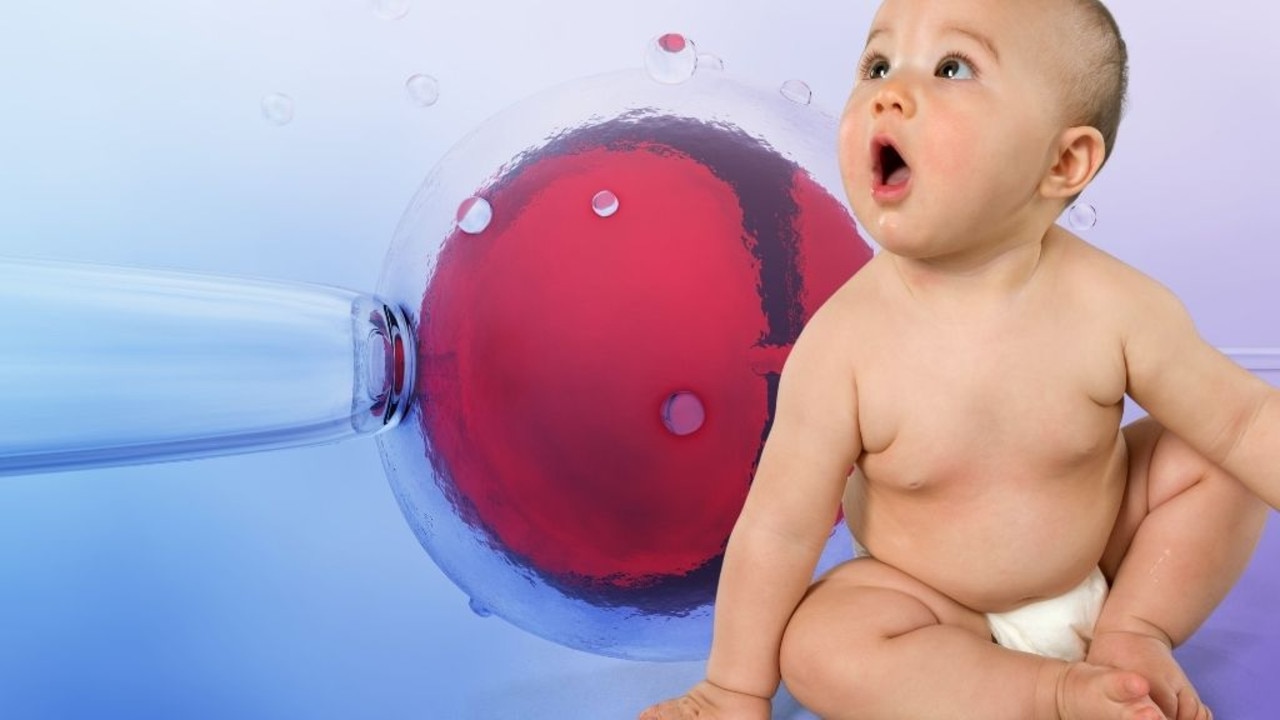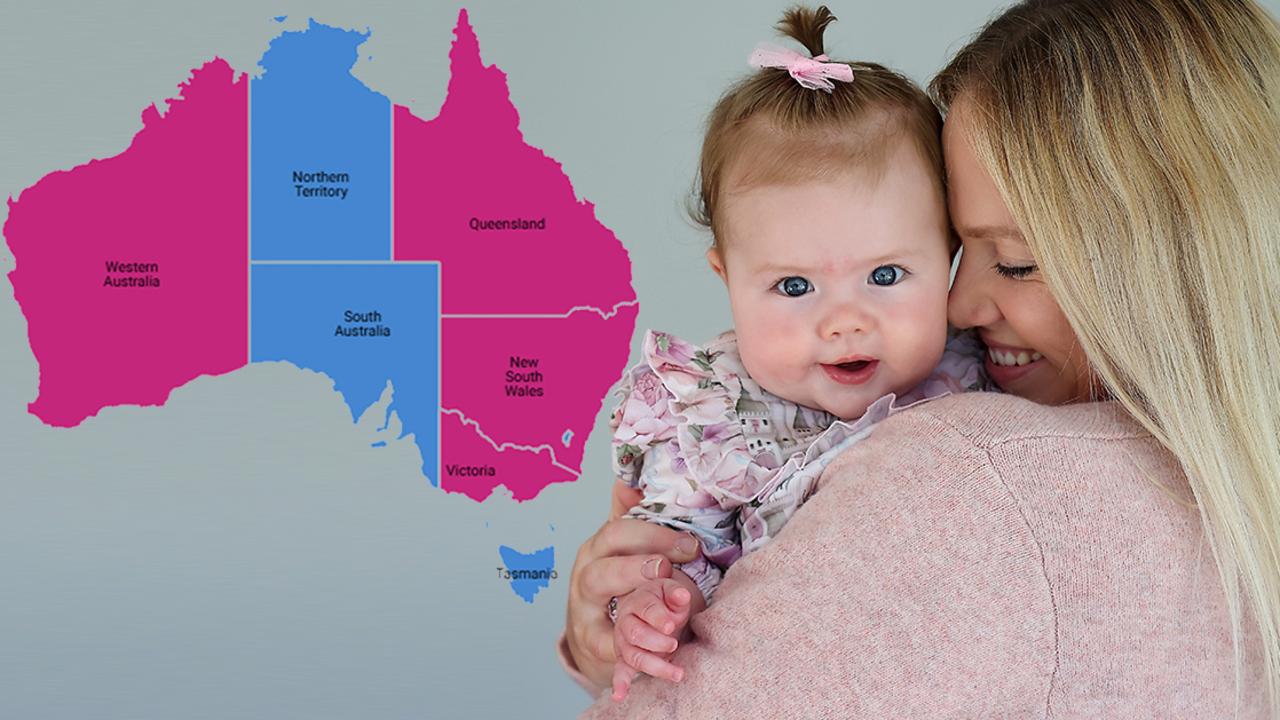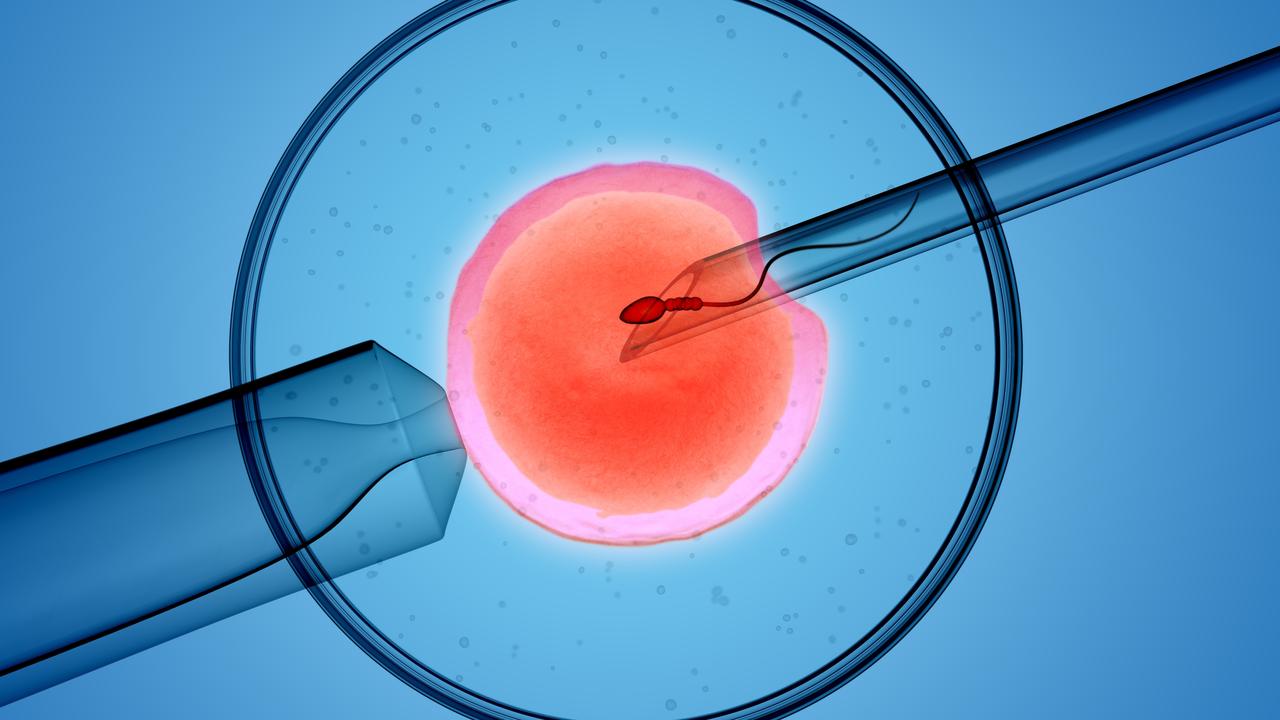New IVF sperm technology ZyMot used to help Dani and Frank Paranthoiene have baby
Dani and Frank Paranthoiene have been on one hell of an IVF journey. Now, new IVF sperm technology has been used to help the couple to welcome their third miracle baby.

Fertility
Don't miss out on the headlines from Fertility. Followed categories will be added to My News.
Dani and Frank Paranthoiene have been on one hell of an IVF journey.
The couple’s first child, Bonnie Hart, was delivered stillborn.
Putting heartbreak aside, nine weeks later they successfully fell pregnant with Inka, now 3.
And new IVF sperm technology has just allowed the couple, both 37, to welcome their third miracle baby into the world.

“I was preparing to go with a few cycles because you do hear those stories where people went through a few cycles. We were cautiously optimistic,” she said.
The pair, from Newcastle, NSW, conceived on their first IVF cycle - with their highest ever number of embryos - using a multi sperm separation device known as ZyMōt, which is considered the first major development in IVF technology for sperm handling in 25 years.

“It [new technology] most likely played a part in helping us fall pregnant”, Mrs Paranthoiene said.
“I think it’s just amazing how far technology has come and it just keeps getting better.”
IVF provider Adora Fertility adopted the new microfluidics device in July, 2023.
The device acts like a “microscopic sieve” to weed out the best swimming sperm.

So far, the clinic has seen a two per cent increase in its fertilisation rates.
“It might sound like a small increase but when it comes to creating human life that is statistically very significant. This could be the difference between somebody becoming a parent or not,” Adora Fertility scientific director Emma Ebinger said.
“Patients are keen for anything that’s going to improve their success rates, even if it’s just 1 per cent, it’s worth doing.”
Ms Ebinger said previous sperm handling techniques included spinning them in a centrifuge which could damage the sperm’s DNA.

“It [using a centrifuge] can result in poorer embryo development and can result in increased miscarriage rates. It’s 50 per cent of the development of the embryo, so if that DNA is damaged, it can have an ongoing impact on the success of the outcome,” she said.
“Allowing the sperm that we use for insemination to be of the best quality with the least amount of damage through the laboratory, then we’re maximizing the chances for our patients.”
Ms Ebinger said they were still collating data on successful births using the new technology, and hoped to have those results in the next 12 months.
IVF Australia medical director Frank Quinn said while the device was “exciting” the clinic was cautious because studies had shown mixed results in whether it made a difference.
He said some of the clinc’s patients had been encouraged to use the technology but before going mainstream, they would like to see more research.
“We will continue to use it and monitor the results, as it may prove beneficial in some cases and couples,” he said.
More Coverage
Originally published as New IVF sperm technology ZyMot used to help Dani and Frank Paranthoiene have baby









